Tawhida and Tania: Friendship Beyond Currents
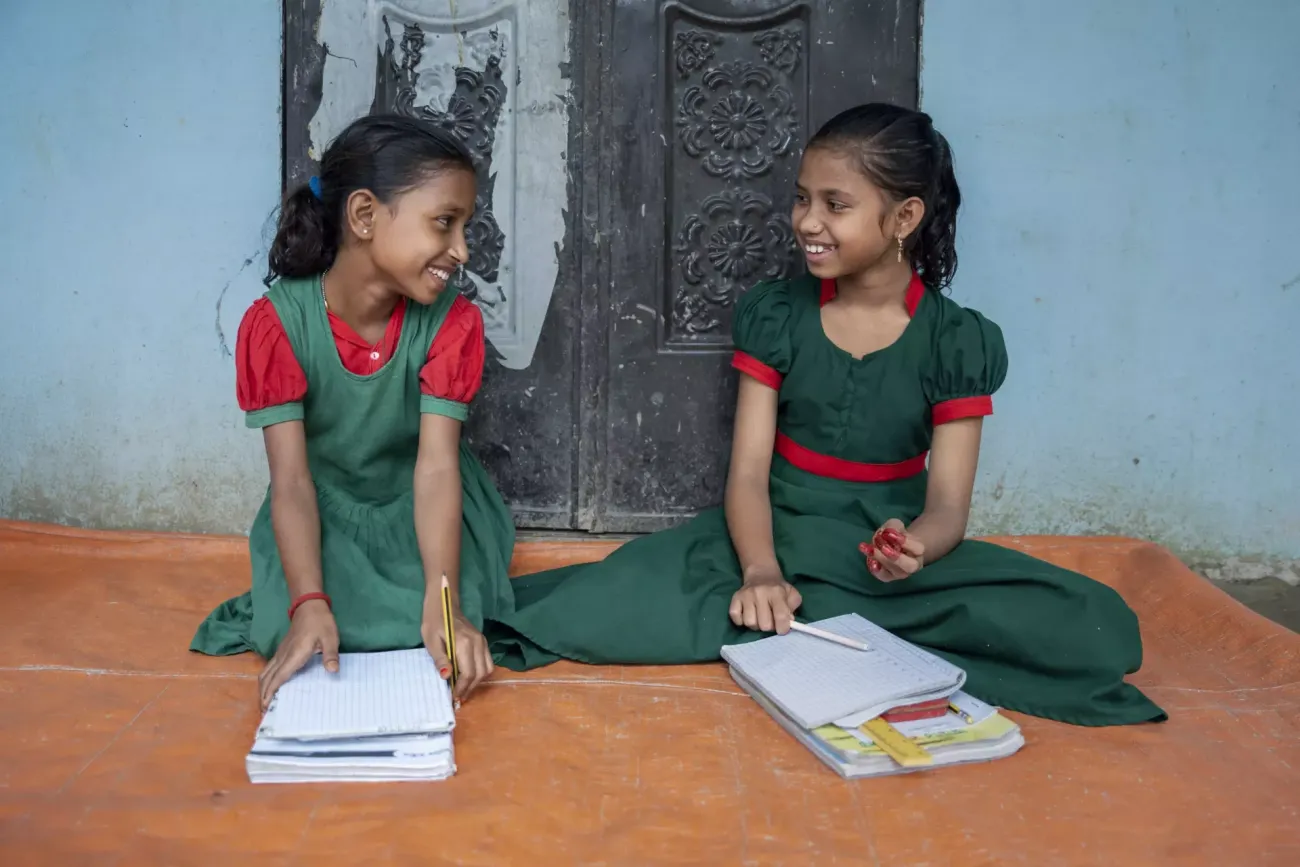
As the climate crisis turns natural disasters more intense and frequent, a response plan is in place so children can keep learning.
Sunamganj, Sylhet—At twelve, Tawhida and Tania went to school for the first time when the UNICEF-supported learning centre under the ‘Let Us Learn’ project opened in their remote village. They achieved foundational literacy and numeracy within six months and became best friends.
But they had to take days off from learning when floods hit this monsoon season. Their learning centre, run by Jagorani Chakra Foundation with the support of UNICEF, was inundated, just like their whole village.
“I don’t like water. I can’t go to the learning centre. I cannot read, I cannot play with my friends. The shelter was crowded,” said Tawhida. Though bashful, she finally let it out. “When I couldn’t meet Tania, I felt sad.”
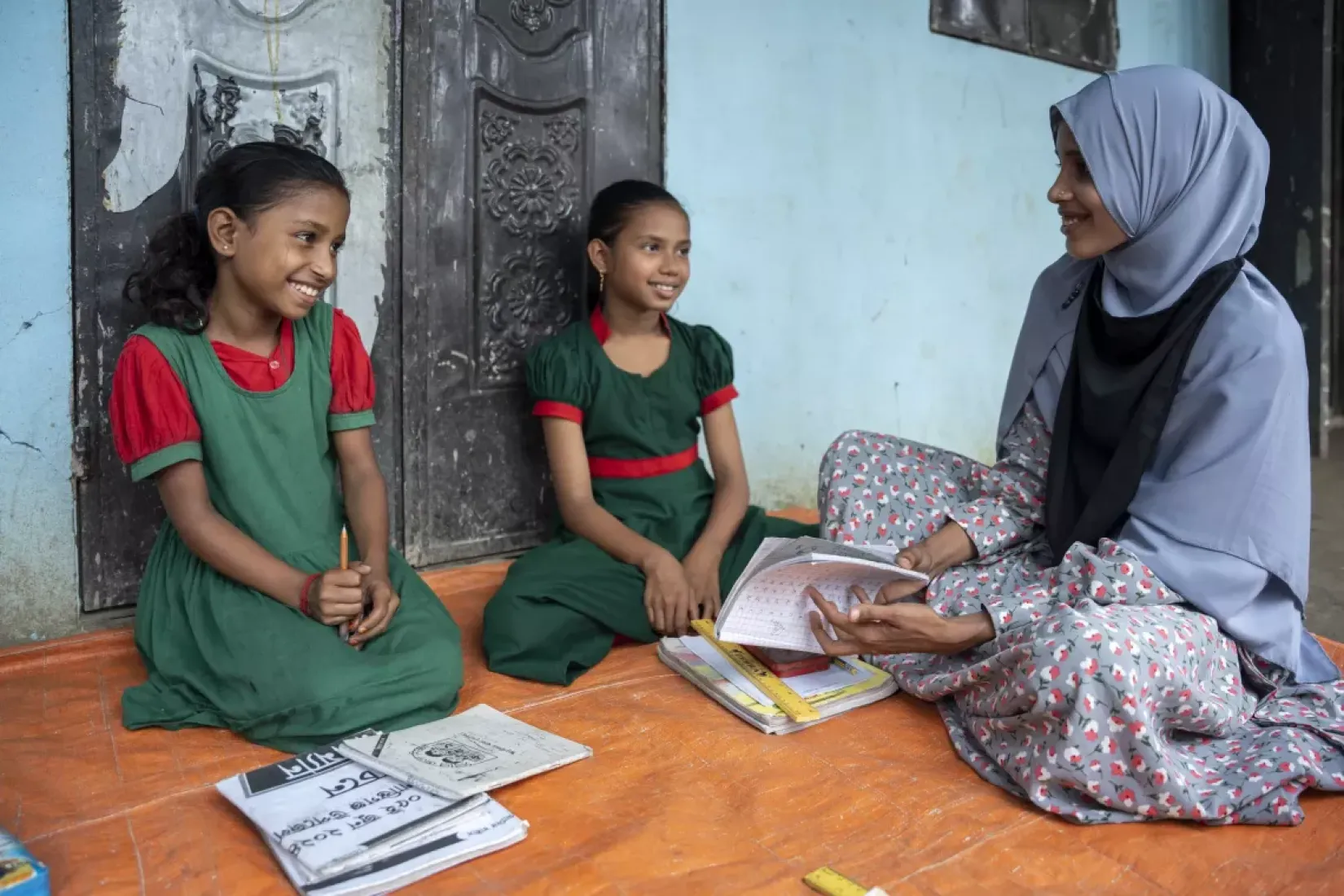
A disaster plan in place
Tawhida and Tania are growing up in the Shantiganj sub-district in Sylhet, a northeastern division of Bangladesh. With its geographical bowl shape, the area (known as haor1) is often filled with floodwater during monsoon season.
To adapt, the UNICEF-supported learning centres are built with a climate-resilient model, with one component aimed at equipping teachers with skills for coping with disasters. Husna Begum, the teacher of the two girls and other children, has received this training.
“When there are flood alerts, I will call Centre Management Committee2 and community members and ask them to shift all the learning materials to a safe place. They help me,” said Husna.
Yet this year, the frequency of floods was unprecedented: flash floods hit their village four times. Realising the water would take some time to recede, the community quickly moved the students to a designated “alternative learning space” to ensure they wouldn’t miss out on school days. A kind carpenter had offered his courtyard, the most elevated location in the village, as a refuge for learning.
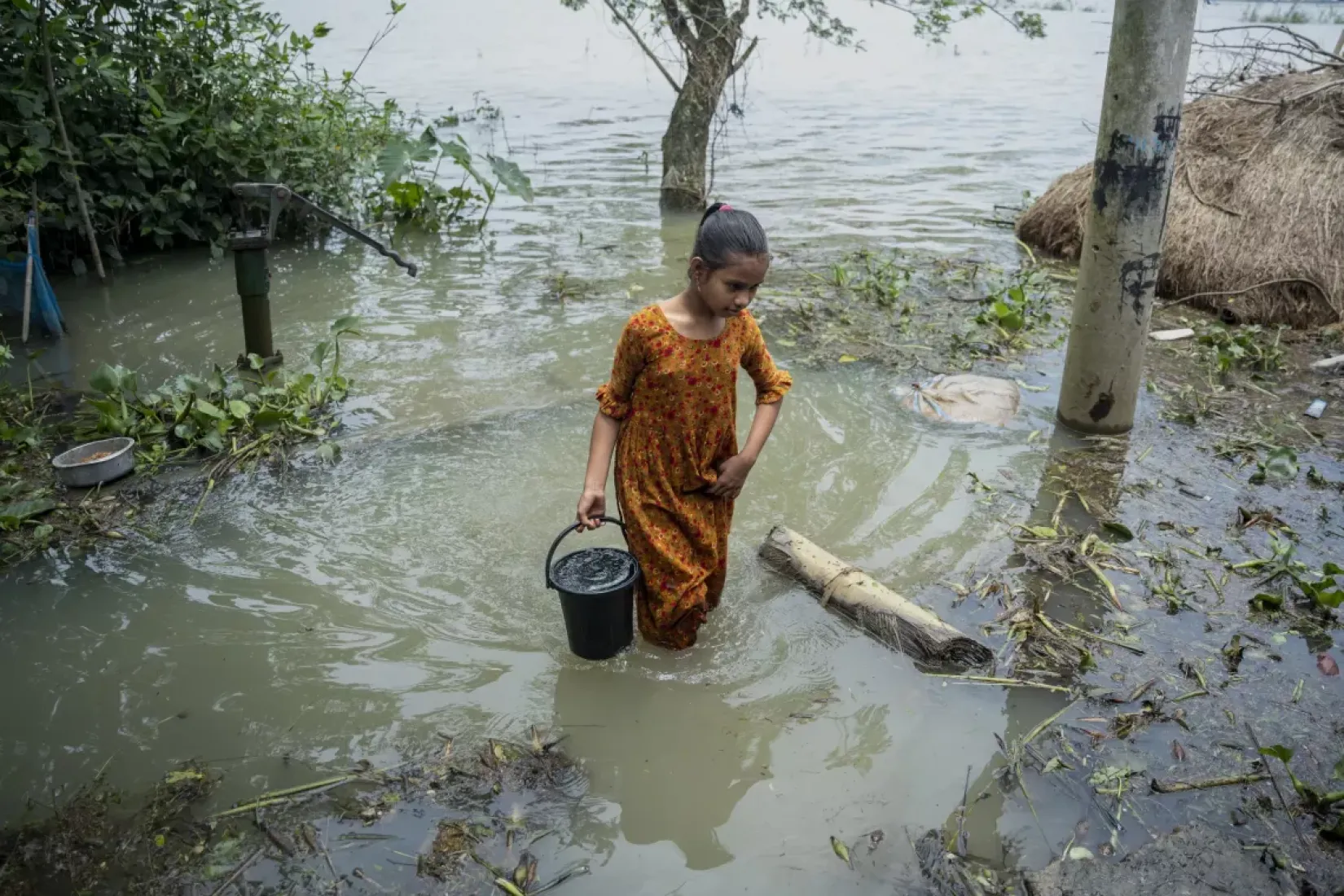
A disrupted childhood
However, the resilience to adapt to disasters did not negate the difficulties of it all.
“Because of floods, we have to struggle a lot to get to the alternative learning space,” said Husna. Every morning, she travelled a long distance to work and picked up Tania along with other students who did not have a boat. “I try to make my students happy and cope with the situation.”
“If I could have one wish granted, I want to have a boat to come to the learning space,” added Tania.
Disasters have made access to education harder in a region where schools are already so out of reach. One in three families cannot provide their children with education due to the long distances to schools.3 The rate is even higher because of poverty – with economic hardships, one in two families put their children’s education on hold.4
These circumstances influence Tawhida and Tania's education and childhood—one filled with questions of when their parents will come home. Tania stays with other family members as her parents leave the village to find work elsewhere. Meanwhile, Tawhida’s father, Saidur Rahman, is a migrant worker living abroad to make ends meet. He and his wife, Sufia Akter, couldn´t study but wanted their daughter to receive an education.
“I want to visit many places with my father. I miss him,” confided Tawhida.
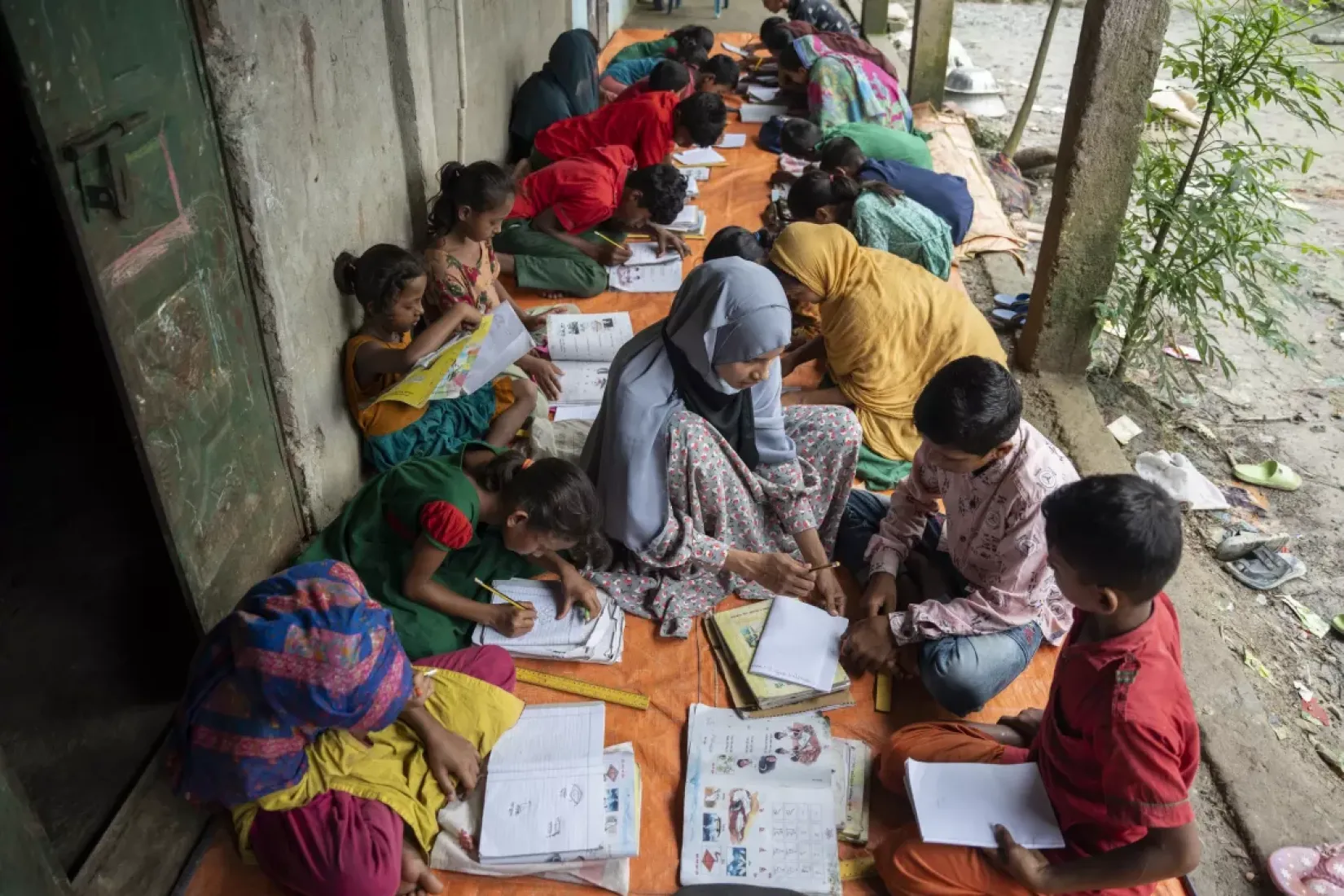
An expansive, magical world
The learning centre, part of the ‘Let Us Learn’ project, has been running in Sunamganj since 2019, transforming the lives of 35,550 children who are out of school. Half of these children are girls, and more than two percent have disabilities.
In these classrooms, five children are grouped based on their learning levels through the Teaching at the Right Level pedagogy, allowing them to progress at their own pace. They can join mainstream schools later or complete their primary education equivalently. This approach, rooted in ability-based accelerated learning, ensures that children of different grades and skill levels can thrive together in the same space.
“The distance is far, so I was afraid of sending my daughter to school,” recalled Sufia. “I am happy I could enrol my daughter in this project. She can learn, and she can listen to stories.”
Tawhida’s favourite Bangla story is The Lying Shepherd, and Tania’s go-to poem is Train by Shamsur Rahman. Books open doors to a magical, expansive world only they can imagine. During their free time with classmates, they bond over local games such as Kut and Bouche. These game-based activities are woven into the UNICEF-supported teaching approach to nurture creativity and teamwork.
Being in classrooms has given both girls a space to learn and play and allowed them to become each other’s best friends as they dream of a better future together.
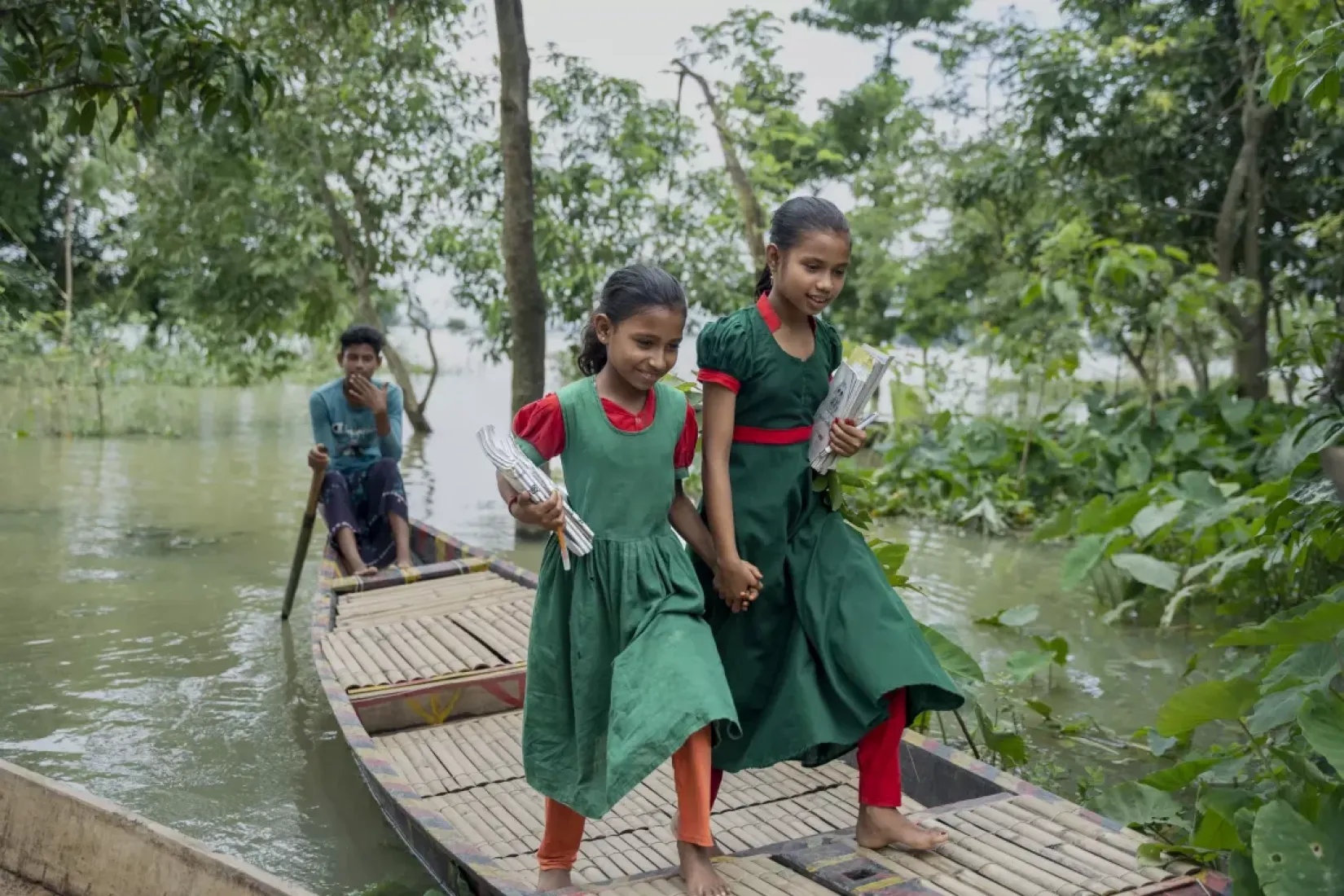
_____________________
1 Haor is a unique wetland ecosystem characterised by bowl-shaped depressions that transform into large water bodies during the monsoon season. It is found in the northeastern part of Bangladesh.
2 The community selects this committee to manage the learning centre, including during disasters. It is led by the community, with the support of UNICEF’s implementing partner.
3 Valenza, Marco, Cirenia Chávez, Annika Rigole, Taniya Laizu Sumy, Mohammad Mohsin and Iqbal Hossain, Ready to Start School, Learn and Work: Evidence from three education programmes for out-of-school children and adolescents in Bangladesh, UNICEF Office of Research – Innocenti, Florence, 2021.
4 Ibid.
5 Teaching at the Right Level (TaRL) is a methodology that aims to improve a child's foundational literacy and numeracy skills by tailoring instruction to their learning level.










